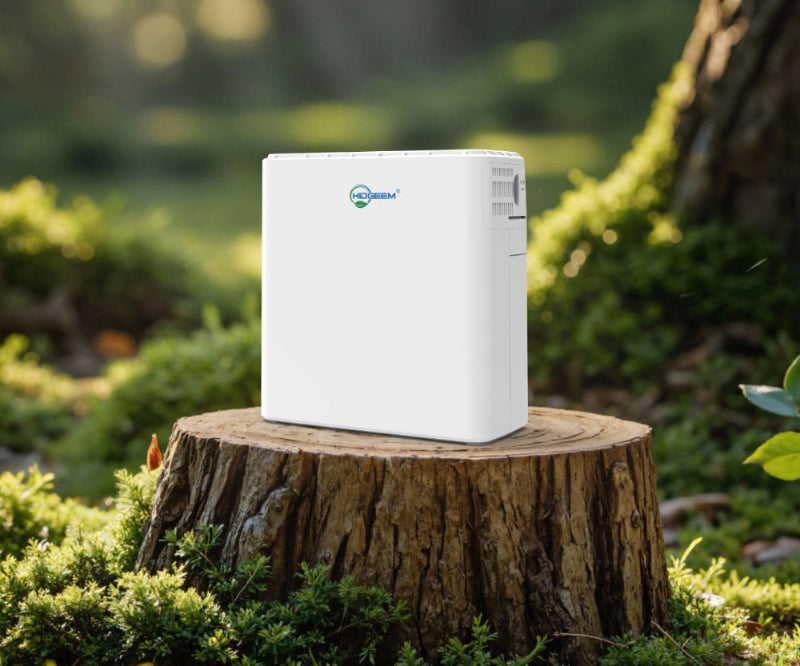
Oxygen Concentrators and Pets: What You Need to Know Before Using One at Home
If you or someone in your family uses a home oxygen concentrator, it’s natural to wonder whether it’s safe to keep using it around your pets. Many households have both oxygen users and beloved cats, dogs, or birds. But can a portable oxygen generator affect your pet’s health — or could pets even use oxygen therapy themselves? Let’s clear up the confusion with some science-based answers.
How a Home Oxygen Concentrator Works
A home oxygen machine draws in surrounding air, filters out nitrogen, and delivers concentrated oxygen (usually 90–96%) to the user through a tube or mask.
Unlike traditional oxygen tanks, it doesn’t store compressed gas; instead, it produces oxygen continuously using a molecular sieve (usually zeolite).
This process is clean, chemical-free, and safe for use in homes with people and animals.
Is It Safe to Use an Oxygen Concentrator Around Pets?
✅ Yes, it’s safe.
A concentrator only filters air — it doesn’t release any toxic gases, odors, or harmful chemicals. Cats, dogs, and other small pets can stay in the same room as the device without health risks.
However, here are some practical tips:
-
Keep cords and tubing out of reach — curious pets might chew them.
-
Ensure the air vents are not blocked by fur, pet beds, or toys.
-
Some pets may need time to get used to the gentle hum of the machine. Modern portable oxygen machines such as the Hidgeem SJ-OX1C operate at under 42 dB — quiet enough even for sensitive pets.
Can Pets Use Oxygen Therapy Too?
Surprisingly, yes — but only under veterinary supervision.
Veterinarians often use pet oxygen machines or oxygen cages to treat animals suffering from:
-
Respiratory infections
-
Heart or lung disease
-
Smoke inhalation or trauma
-
Post-surgery recovery
In these cases, oxygen therapy can literally save a pet’s life.
But it’s important to understand that pet oxygen concentrators are not the same as human ones.

Pet Oxygen Machine vs. Human Oxygen Concentrator: What’s the Difference?
| Feature | Human Oxygen Concentrator | Pet Oxygen Machine |
|---|---|---|
| Oxygen Flow Type | Continuous or pulse flow (1–5 L/min) | Continuous flow, usually low pressure |
| Oxygen Purity | 90–96% | 90–95%, but with adjustable airflow suitable for small lungs |
| Output Pressure | Higher (30–70 kPa) to meet adult breathing needs | Lower (10–30 kPa) to prevent over-oxygenation |
| Delivery Method | Nasal cannula or mask for humans | Oxygen cage, tent, or small-animal mask |
| Design Focus | Compact, portable, noise control | Stable temperature, safe for enclosed spaces |
| Cost | $300–$800 | $400–$1,000 depending on size and accessories |
Can You Use a Human Oxygen Machine for Pets?
It’s not recommended to use your personal home oxygen concentrator directly on pets.
Here’s why:
-
Flow pressure is too high.
Most home concentrators are designed for human lung capacity. Small pets can easily receive too much oxygen, which may damage their lungs or lead to oxygen toxicity. -
No way to regulate animal-specific airflow.
A pet’s safe oxygen flow may range between 0.1–1 L/min, far lower than human devices provide. -
Mask size and fittings differ.
Human cannulas and masks won’t seal properly on animals, leading to uneven oxygen delivery or CO₂ buildup. -
Temperature and humidity control.
Veterinary oxygen chambers maintain comfortable airflow for small animals — something regular portable oxygen machines can’t do safely.
If you think your pet needs oxygen therapy, the safest choice is to consult a veterinarian and let them prescribe a pet-specific oxygen generator or cage system.
Tips for Oxygen Users Living with Pets
Even if your pets don’t need oxygen therapy, it’s smart to maintain a safe environment:
-
Place your concentrator in a stable, well-ventilated area.
-
Clean intake filters regularly to prevent pet hair buildup.
-
Train your pets not to play with the tubing.
-
If you travel, choose a portable oxygen generator that’s lightweight, quiet, and easy to move between rooms.
Final Thoughts
Oxygen concentrators and pets can coexist safely — as long as you use the equipment correctly.
Your home oxygen machine won’t harm your pets, but it’s not suitable for direct veterinary use. For pets needing oxygen therapy, specialized pet oxygen machines or oxygen cages are the right choice.
Both humans and animals deserve clean, reliable oxygen — just make sure each has the right equipment for their needs.
Share





